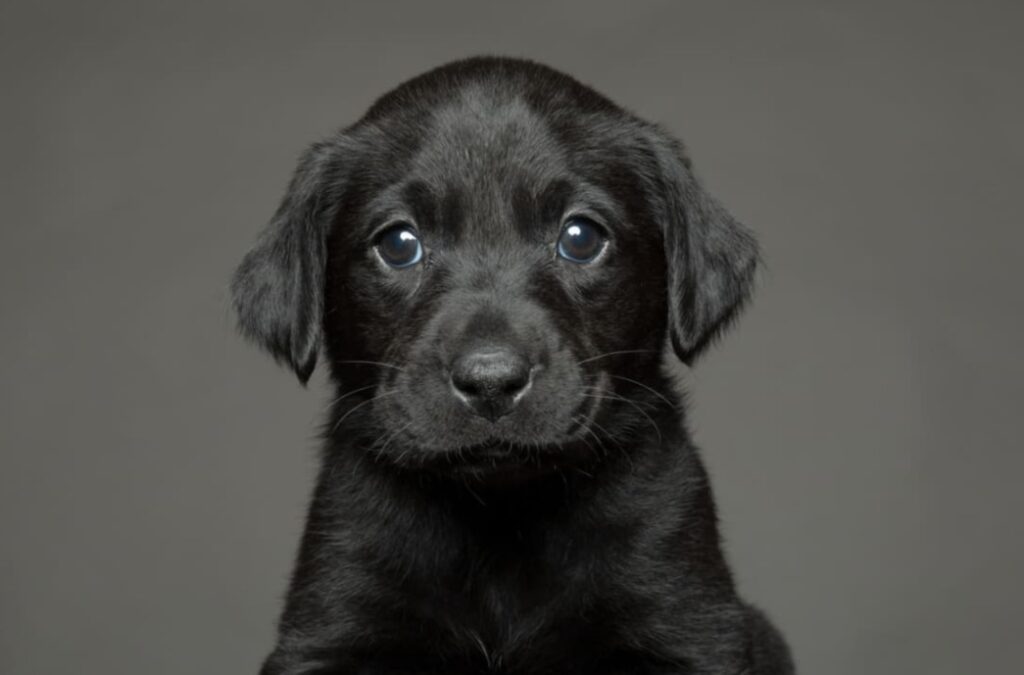
Meet Ruby, a ten-year-old Labrador Retriever who seemed to have settled into senior rhythms: slow walks, quiet flops onto the couch, gentle sighs of contentment.
She looked and acted like a mature dog who had done her job, loved her people, and was ready to ease into softer days.
Then came Gordie—a bouncing, high-energy Labrador puppy who entered the family and turned everything upside-down. Immediately.
The moment Ruby crossed paths with Gordie, something inside her clicked. Instinct awakened.
The old dog who once favored comfort over chaos suddenly found herself darting, playing, tugging, wrestling—behaving like a pup again.
It might seem counterintuitive: wouldn’t adding a puppy stress out a senior dog? Yeah, that’s what many would think.
But Ruby’s story shows the flip side: the puppy didn’t just bring noise—he brought life. He carried an invitation for Ruby to rejoin the game. She took it.

Videos of the two show Ruby matching Gordie move for move. She’s not holding back. She’s not “too old” or “just coasting.”
She’s playing. And in those moments, you don’t see age—you see spark. You see the transformation. You see joy rekindled.
And here’s the beauty: it’s mutual. The puppy gets a mentor. Ruby becomes guide, teacher, fun big sister. The new guy bursts with boundless energy.
The ten-year-old dog offers calm surety. It’s not just about youth returning—it’s about legacy passing on, and life getting richer for both.
Fans of the video on TikTok and Instagram wrote things like:
“Puppies make old dogs young again…”
But let’s not gloss over the work behind the scenes. When older dogs get siblings, it’s crucial people pay attention to pace, energy levels, and space.
Ruby needed room to shine and rest. She wasn’t asked to do full-on puppy chaos every minute—just enough to wake up her internal “yes, I’ve still got this” engine.
Experts say to make sure the senior dog’s needs aren’t overshadowed by puppy mania.
In Ruby’s case, her humans did this just right. They introduced Gordie, watched Ruby’s reaction, gave her stillness when she needed it, encouraged the reboot when she was ready.
And the result? A rescue story, yes—but also a story of renewal.
Imagine waking up in your tenth year and thinking you’re on cruise control. Then someone hands you the keys to a racecar.
That’s how Ruby must have felt. The tail wags returned. The “zoomies” snuck up. The tug-of-war games made a comeback.
She remembered what it meant to want something more than nap time.
Here’s what I want you to remember: Age in dogs is not the sentence for stop-living. It can be the setup for rediscovery.
When a senior dog meets a puppy sibling, it’s not just about giving the older dog company—it’s about giving them an echo of youth.
A shot at reminding them they’re still here. Still capable. Still full of heart.
So if you’ve got a senior dog who’s “fine, thank you,” maybe consider asking: could there be more? Could a younger friend wake them up?
Could the last chapter still hold some surprise pages?
Because Ruby proved it. She didn’t just age gracefully—she roared quietly back to life.
And Gordie didn’t just get a sibling—he found a boss-buddy who taught him how to enjoy slow wisdom and high jinks.
If this story moved you, share it. Show someone that adding a puppy doesn’t always mean extra burden—it can mean extra life.
For the younger dog and the older one. And who knows? Maybe your senior dog is sitting on a sofa dreaming of one more race.
Let the puppy show them the track.



